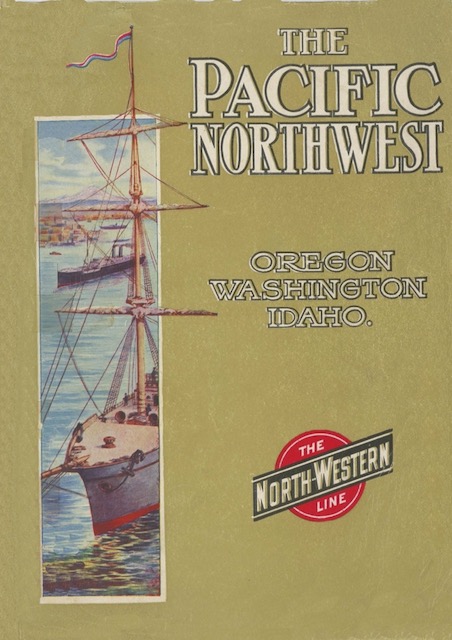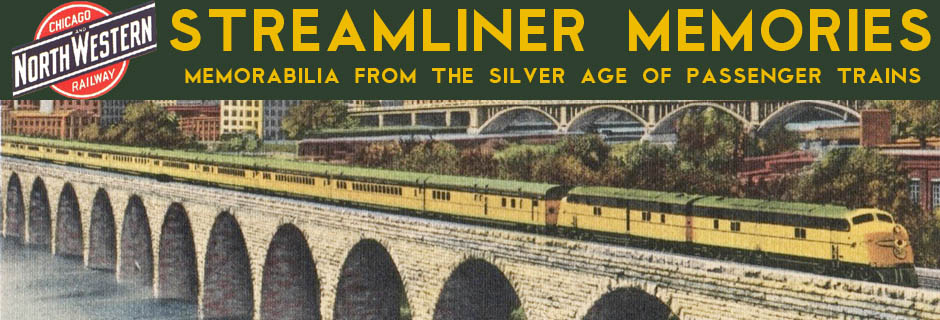In the nineteenth century, railroads were more interested in attracting settlers to the regions they served so they would have some customers for goods the settlers grew, made, or needed. By the twentieth century, railroad advertising was transitioning to focus on scenic wonders and vacation paradises. This 1909 booklet is from the transition period so advertises both scenery and the potential for settlement, but the emphasis is definitely on the latter.
 Click image to download a 16.2-MB PDF of this 58-page booklet.
Click image to download a 16.2-MB PDF of this 58-page booklet.
Slightly more than the first half of the booklet discusses the production of fruit, grain, vegetables, livestock, timber, and minerals, though the text is interspersed with photos of waterfalls, rivers, and other scenery. Much of the remainder discusses the Columbia Gorge, scenic waterways, and the region’s major cities.
A few pages are left to describe “The Chicago and North Western Railway and its Connecting Lines between Chicago and the Pacific Northwest,” with the “connecting lines” part in much smaller print. The closest the C&NW came to the Northwest was Lander, Wyoming, and the line dead-ended there with no connecting route to Idaho. So if people wanted to take the C&NW to the Northwest, they would have to change railroads (though not necessarily trains) in Omaha or change railroads and trains in Minneapolis.
Apparently, in 1909, the C&NW did not yet have close enough ties to the Union Pacific to exhibit a strong preference for travel via the Overland Route vs. one of the Northern lines (GN, NP, or CP). It does discuss a train unimaginatively named the Chicago-Portland Special that went, without a change in Omaha, from Chicago to Portland over the Union Pacific lines. According to the not-always reliable Wikipedia, that train operated from 1901 to 1910. However, as we know, the C&NW also briefly operated the North Coast Limited from St. Paul to Chicago, though that didn’t begin until two years after this booklet was issued.
Finally, the booklet devotes a page to “daily and personally conducted tours to Portland, San Francisco, and Los Angeles.” The page refers to the “North Western-Union Pacific Tour Department” with offices in Chicago, Boston, Buffalo, St. Louis, and Los Angeles.
